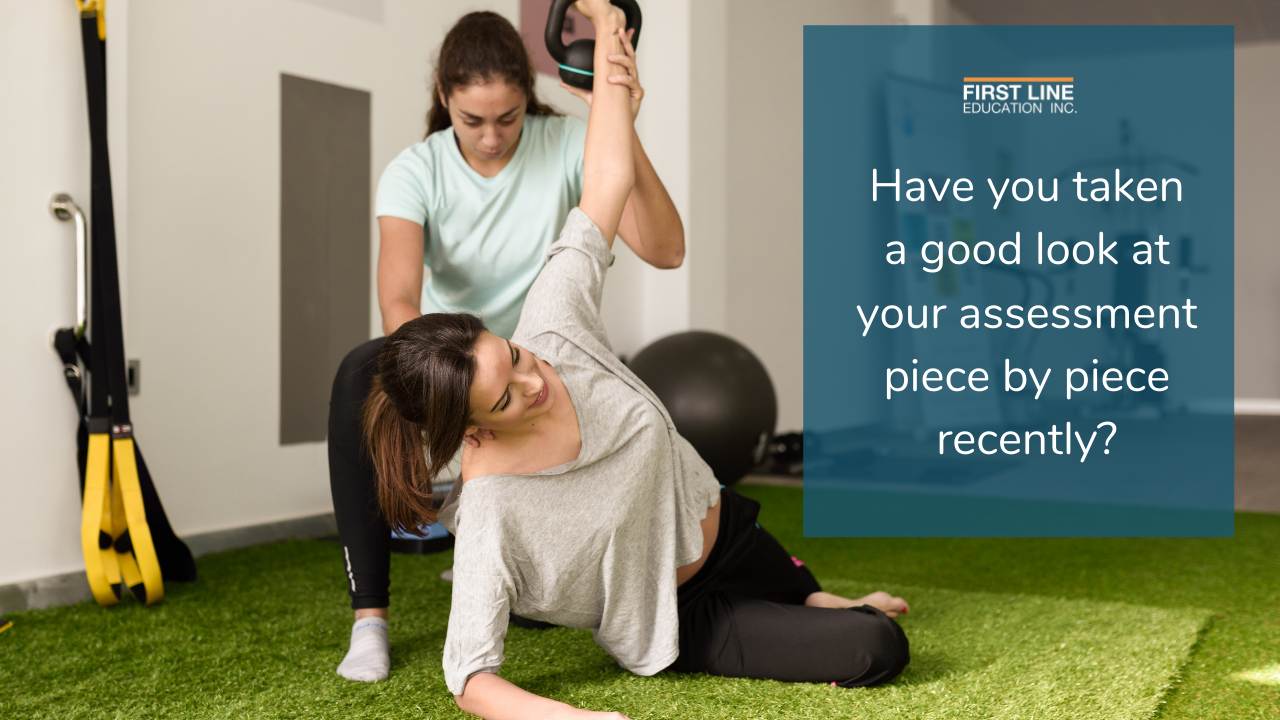Are We Too Tough On Our Clients?

When we decide to assess our clients, are we asking them to show us their abilities in a way that makes sense for them? Or are we simply running through a standard protocol because that’s what we’ve been doing for years?
Have you taken a good look at your assessment piece by piece recently? Are all the parts still relevant and useful? Are you trying to somehow impress your clients with your speed and your silence as you run from test to test? ‘Stand here please and reach your arms overhead, and back down, now bend forward towards the floor …’ or do you teach as you assess and tell your clients why you are having them do what you are asking them to do?
Keeping your assessment very simple has big benefits. Simple tests usually mean simple instructions. Your client will feel comfortable and relaxed rather than nervous and tense as they try to please you with the results they believe you want to see.
Simple tests are usually the best ones because you’ll see the movements that are part of a clients’ everyday life and not a strange contorted body position that they may never have done before and that may be dangerous for their balance - and their confidence in you!
This week in Kin School we are reviewing gait analysis and simple daily functional tests like diaphragmatic breathing, an overhead reach, a forward bend, a seated trunk rotation, a sit to stand and stair climbing.
We’re teaching kinesiology students and practicing kins to watch very carefully how their client’s body is responding to our simple and clear instructions:
- Does your client’s body move well or do they have a difficult time beginning to move?
- Does your client seem happy to move or are they hesitating for some reason?
- Do movements from one part of the body flow well into the next?
- Are movements looking smooth and easy?
- Is the motion slow, cautious, or guarded?
- Are there expressions of limited discomfort, anxiety or pain?
- Could there be an exaggeration of limitations?
Watching our clients move leads us to the next step in our assessment which is understanding how well the tissues of the body (our fascia) respond to these movements. Are there restrictions with simple movements that you could reduce or eliminate with instructions that are more clear?
Could you offer an analogy for breathing, for example, like ‘allow your rib cage to expand gently as you breathe in through your nose so that your diaphragm can move like a balloon being slowly blown up’?
With the movement challenges and the fascial restrictions that you’ve noted for your client, it’s time to move on to your musculoskeletal evaluation. Now you can take a look at the shoulder or the pelvis (or both!) and test muscles for endurance and strength.
By breaking down your assessment into stages, revisiting the results for the highlights and then moving on to the next stage, you can keep your client’s goals top of mind.
As you become a better critical thinker and a better problem solver with experience, you’ll start to picture every body as a beautiful puzzle - and the solution lies in your ability to find the problem! I’ll take that challenge any day.
Become a Guest Blogger!
We are now accepting applications for new Guest Bloggers! We encourage our fellow bloggers or aspiring bloggers to share their knowledge with the First Line Education community! If interested, please click the link below.


